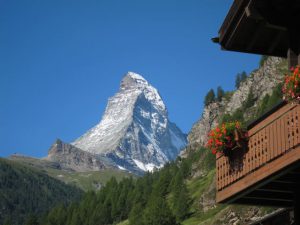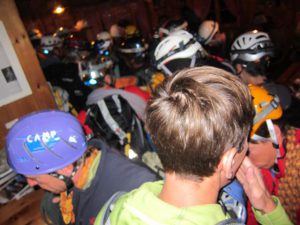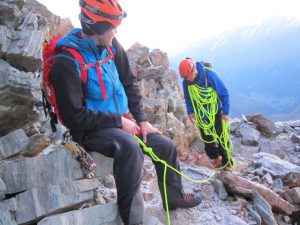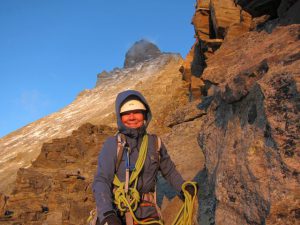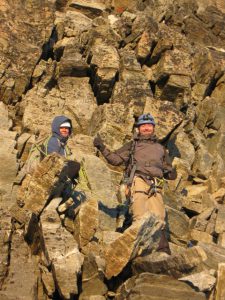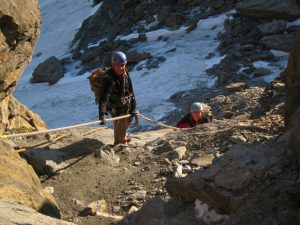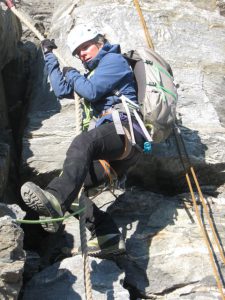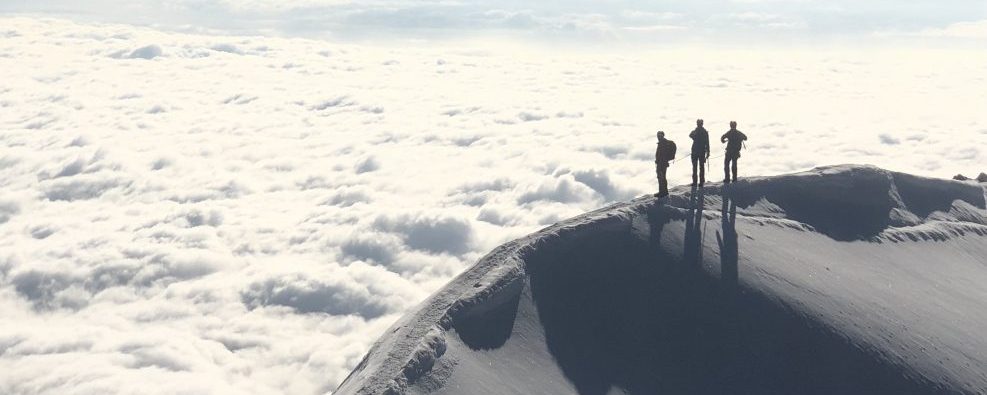Matterhorn
The Matterhorn is certainly the most iconic mountain in the world. No less. It’s no surprise that everyone wants to stand on its summit. Yet climbing the Matterhorn is no walk in the park. It requires fast climbing and a great sense for route finding.
When Whymper first climbed it in 1864, they started from Zermatt and made it 3/4 of the way up in a day, which is mindblowing considering the times, the gear they had and the very poor rock quality on the climb. When I first attempted the Matterhorn, Iwas 17. My brother had decided to climb it in pure style, starting from Zermatt instead of taking the lift to Schwarzsee. I had no experience back then and it was late in the Fall. We made slow progress and turned around. The next time I visited the Matterhorn was in the winter of 2003 to climb its great north face – one of the three great north faces in the Alps. We left the hut at noon because of poor weather. We had a twelve hour window of better weather and decided to go for it. We bivouacked below the summit, sitting on a ledge so tiny that each time I fell asleep, I also fell off my ledge. We also lost our lighter and couldn’t make any water or warm food. It was a little epic. Since then, I have stood on the mighty Matterhorn many times. On this guided trip, I was working with a local Swiss guide, Jean Pavillard and American Steve Banks. Our clients were a brother and sister, Alicia and Peter, from Australia and their friend, Patrick. They had been climbing around Zermatt for a few days, training to get ready for the D-Day. The whole Matterhorn experience is pretty particular.
The local Zermatt guides own the show. On the walls in the hut is written: breakfast 4am, departure 4.20 (underlined indeed). There are so many stories around the Zermatt guides. They have been known to: lock the hut door so that no one would leave before them, send a guide ahead in the wrong direction with a headlamp on while the rest of them went on without lights, just as to lead the other parties astray, be really hard on their clients, etc. Granted, they know the route by heart and are super fast and efficient at climbing it. Yet, there is no need for such attitude. Clients are tied into the rope while still chewing on their morning breakfast slice of bread, with their helmets and harnesses already on. People are all racing for the door, hoping to be the first ones (after the Zermatt guides) to be out the door and race to the start of the climb, 5 mins out the door. There, you wait for your turn to climb up the fixed ropes initiating the climb. It’s not exactly your best wilderness experience, but it’s pretty unique in its own way.
It’s a long ways to the summit: 1200m long to be precise. You need to keep a pretty steady pace the whole way, as it gets harder the higher you go. After the Solvay Hut, the terrain is more exposed, harder to protect in places, and then you get to climb up fixed ropes and neve all the way to the summit.
Although we didn’t summit this time, it was great to be back on that mountain! Looking forward to next time.

